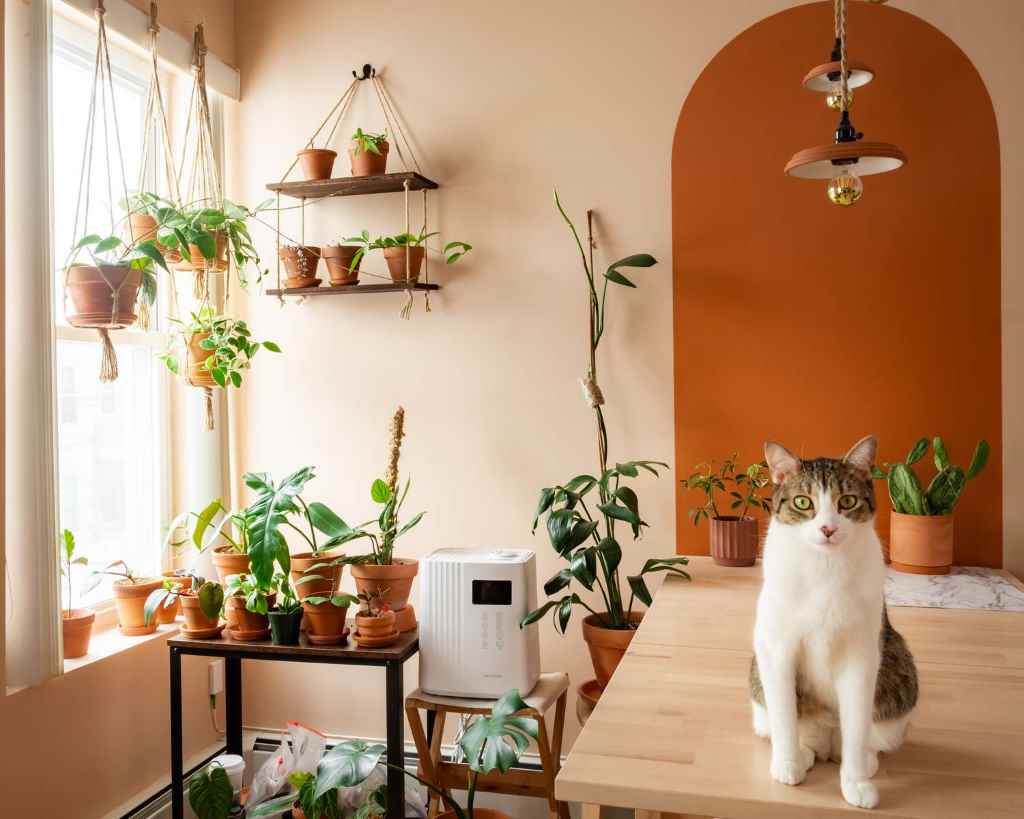For those of us with a love of both greenery and our feline friends, the battle between cats and houseplants can be a frustrating one. Your cat’s instincts might lead them to nibble on your carefully tended plants, which can be harmful to both the plants and your furry friend. Fortunately, with understanding and some clever strategies, you can co-exist peacefully with both your plants and your kitty.
Understanding Your Cat’s Behavior
Before we dive into solutions, it’s crucial to understand why cats are attracted to plants in the first place:
- Instinct: Chewing on plants is an instinctive behavior for cats. In the wild, they might nibble on grass to aid digestion or expel hairballs.
- Boredom: Cats, especially indoor cats, might turn to plants out of boredom or a lack of other engaging activities.
- Nutritional Deficiencies: Some cats might crave plants if their diet lacks certain nutrients.
- Curiosity: Cats are naturally curious creatures, and the texture and movement of plants might be too tempting to resist. This is why it’s important to provide kibble for cats to keep them satisfied and away from potentially harmful plants.

Plant-Protecting Strategies
- Make Plants Unappealing:
- Citrus Deterrent: Cats dislike citrus scents. Place orange or lemon peels around the base of your plants or use a citrus-scented spray (diluted with water) on the leaves.
- Bitter Spray: Commercial bitter sprays, designed to deter chewing, can be applied to plant leaves. Be sure to choose a non-toxic spray safe for both plants and pets.
- Cayenne Pepper: A light dusting of cayenne pepper around the plant’s base can deter your cat. Be careful not to use too much, as it can irritate their paws and nose.
- Provide Alternatives:
- Cat Grass: Grow a pot of cat grass (available at pet stores) specifically for your cat to nibble on.
- Catnip: Offer catnip toys or a separate catnip plant to redirect their attention.
- Environmental Enrichment: Provide plenty of toys, climbing structures, and interactive play to keep your cat entertained and less likely to bother your plants.
- Protect Your Plants:
- Physical Barriers: Place chicken wire, pebbles, or pinecones on the soil’s surface to deter digging.
- Elevate Plants: Hang plants or place them on high shelves out of your cat’s reach.
- Terrariums: Enclosed terrariums can protect delicate plants from curious paws.
- Training and Positive Reinforcement:
- Spray Bottle: A gentle spritz of water when your cat approaches your plants can discourage them.
- “No” Command: Use a firm “no” when you catch them in the act and redirect their attention to appropriate toys or activities.
- Reward Good Behavior: Reward your cat with treats and praise when they leave your plants alone.
Plant Safety for Your Feline Friend
While protecting your plants, it’s essential to ensure your cat’s safety:
- Identify Toxic Plants: Some common houseplants, like lilies and philodendrons, are toxic to cats. Research and remove any potentially harmful plants from your home.
- Consult Your Vet: If you suspect your cat has ingested a toxic plant, contact your veterinarian immediately.
Additional Tips
- Regularly Groom Your Cat: Frequent brushing can help reduce hairballs, a common reason cats eat grass.
- Monitor Your Cat’s Diet: Ensure your cat’s diet is balanced and provides all necessary nutrients to prevent them from seeking out plants.
- Provide Fresh Water: Plenty of fresh water can deter your cat from drinking from plant saucers, which can contain fertilizer residue.
Remember: Patience is key! It might take time for your cat to adjust to these new strategies. Be consistent with your approach and celebrate small victories along the way. With a little effort, you can create a harmonious environment where your cat garden plants, and other greenery can thrive together. For more insights, check out https://cherryblossomlife.com/gardening-tips/bromeliads-and-cats-discover-the-perfect-plants-for-cat/.
Let me know if you’d like me to elaborate on any of these points or provide additional information!
